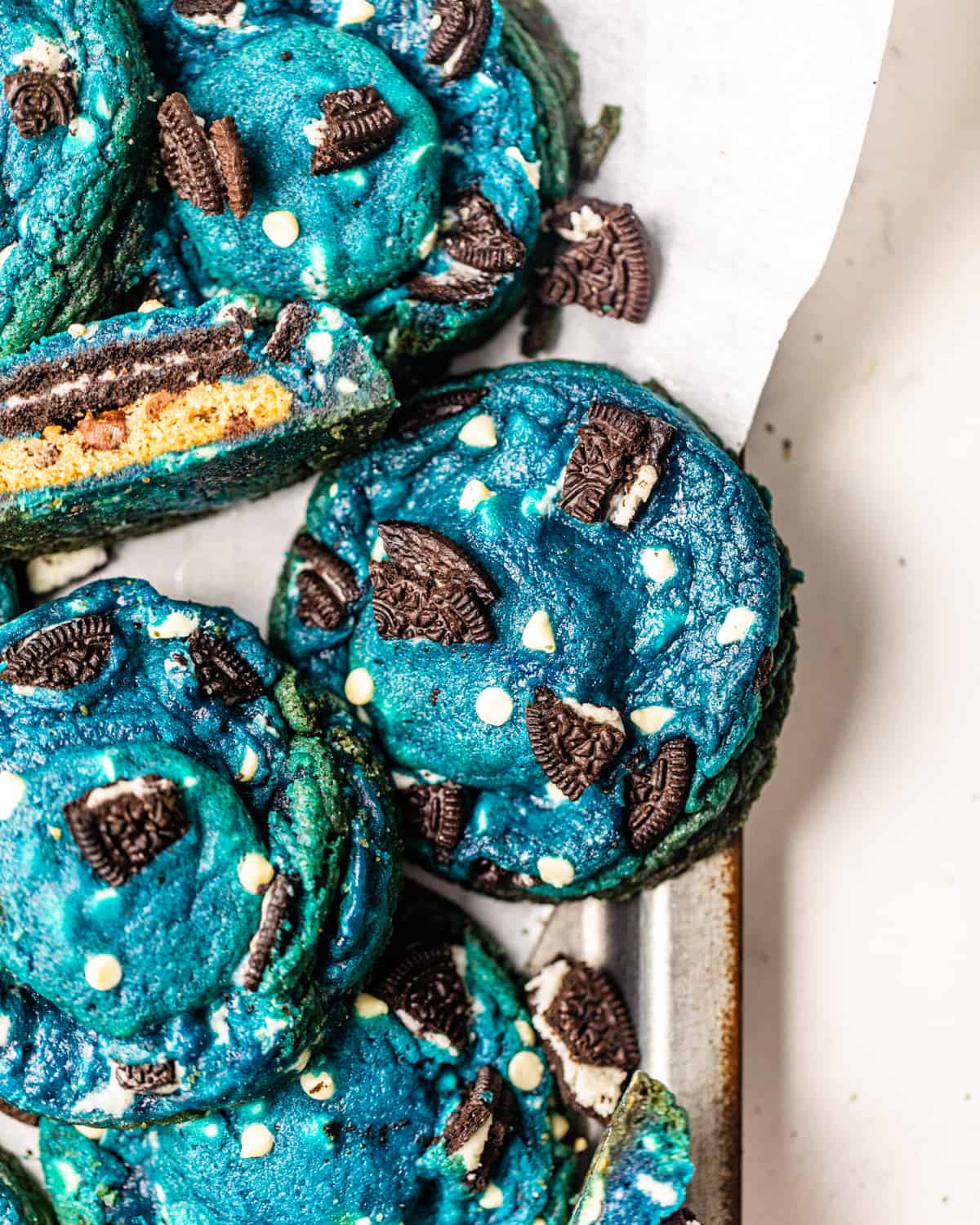Understanding what in a cookie recipe gives it trans fat is essential for anyone looking to bake healthier treats. Trans fats have long been a concern due to their negative impact on heart health, and many people are unaware of how these harmful fats make their way into homemade cookies. The culprit often lies in certain ingredients or processes used during baking. By identifying the sources of trans fats, you can make informed choices to create delicious cookies without compromising your health.
Trans fats are artificially created fats that were once widely used in processed foods for their stability and texture-enhancing properties. In cookie recipes, trans fats typically come from specific types of fats or oils. Many traditional recipes call for ingredients like margarine, shortening, or pre-packaged frosting, all of which can contain trans fats. These fats not only affect the texture of the cookies but also contribute to their shelf life. However, with growing awareness of their health risks, many bakers are now seeking alternatives to eliminate trans fats from their recipes.
The good news is that avoiding trans fats in cookies doesn’t mean sacrificing taste or texture. By understanding what in a cookie recipe gives it trans fat, you can replace problematic ingredients with healthier options. For example, substituting butter or plant-based oils for margarine can make a significant difference. Additionally, choosing high-quality, natural ingredients ensures your cookies remain flavorful while being better for your health. Let’s dive deeper into the specifics of trans fats and explore how to make your cookies healthier without losing their charm.
Read also:Ryder Evan Russaw Exploring The Life And Achievements Of A Rising Star
Table of Contents
- What Are Trans Fats?
- What in a Cookie Recipe Gives It Trans Fat?
- Why Should You Avoid Trans Fats?
- How to Identify Trans Fats in Ingredients?
- Can You Make Cookies Without Trans Fats?
- Healthier Alternatives to Trans Fats
- What Are the Benefits of Trans Fat-Free Cookies?
- How to Check Trans Fat Content on Packaged Ingredients?
- Frequently Asked Questions About Trans Fats in Cookies
- Conclusion
What Are Trans Fats?
Trans fats are a type of unsaturated fat that undergoes a process called hydrogenation. This process involves adding hydrogen to liquid vegetable oils to make them more solid and stable. While this enhances the texture and shelf life of foods, it also makes trans fats harmful to health. Consuming trans fats has been linked to an increased risk of heart disease, inflammation, and other serious health issues.
For decades, trans fats were commonly used in processed foods, including cookies, because they provided a desirable texture and extended shelf life. However, as research highlighted their dangers, many countries began banning or restricting their use. In 2015, the U.S. Food and Drug Administration (FDA) declared trans fats unsafe, leading to their gradual removal from most processed foods. Despite this, some products may still contain trace amounts of trans fats, so it’s crucial to read labels carefully.
What in a Cookie Recipe Gives It Trans Fat?
When examining what in a cookie recipe gives it trans fat, the primary culprits are often the fats and oils used. Margarine and shortening are two common ingredients that may contain trans fats, especially if they are not labeled as "trans fat-free." These products are frequently used in cookie recipes to achieve a soft, chewy texture and to enhance flavor.
Another potential source of trans fats is pre-packaged frosting or icing. Many store-bought frostings contain partially hydrogenated oils, which are a major contributor to trans fats. Even some chocolate chips or flavored extracts may include trans fats, so it’s important to check the ingredient list of every component in your recipe.
Fortunately, identifying and replacing these ingredients can eliminate trans fats from your cookies. For example, using real butter or coconut oil instead of margarine can make a significant difference. Similarly, opting for natural, minimally processed ingredients ensures your cookies remain free of harmful fats.
Why Should You Avoid Trans Fats?
Avoiding trans fats is crucial for maintaining good health. These fats raise bad cholesterol (LDL) levels while lowering good cholesterol (HDL), increasing the risk of heart disease and stroke. They also contribute to inflammation, which is linked to various chronic conditions such as diabetes and obesity.
Read also:Kathleen Rosemary Treado Discovering The Life And Journey Of An Inspiring Personality
Even small amounts of trans fats can have a significant impact on your health. Studies have shown that consuming just 2% of your daily calories from trans fats can increase the risk of heart disease by up to 23%. This is why understanding what in a cookie recipe gives it trans fat is so important. By eliminating these harmful fats, you can enjoy your favorite treats without jeopardizing your well-being.
How to Identify Trans Fats in Ingredients?
Identifying trans fats in ingredients can be tricky, especially since food manufacturers are allowed to label products as "0 grams trans fat" if they contain less than 0.5 grams per serving. This means that even products labeled as trans fat-free may still contain small amounts of these harmful fats.
To ensure your cookie recipe is free of trans fats, always check the ingredient list for terms like "partially hydrogenated oils." These are a clear indicator of trans fats. Additionally, be wary of processed or pre-packaged ingredients, as they are more likely to contain hidden trans fats.
Can You Make Cookies Without Trans Fats?
Absolutely! You can make delicious cookies without trans fats by choosing the right ingredients. Start by replacing margarine or shortening with healthier alternatives like butter, coconut oil, or avocado oil. These options provide the same rich flavor and texture without the harmful effects of trans fats.
Another way to ensure your cookies are trans fat-free is to make your own frosting or icing. This allows you to control the ingredients and avoid partially hydrogenated oils. You can also experiment with natural sweeteners like honey or maple syrup to enhance the flavor of your cookies.
Healthier Alternatives to Trans Fats
When it comes to baking cookies, there are plenty of healthier alternatives to trans fats. Here are a few options to consider:
- Butter: While butter contains saturated fat, it is a natural ingredient and a better choice than margarine or shortening.
- Coconut Oil: This plant-based oil adds a rich flavor and soft texture to cookies without the harmful effects of trans fats.
- Olive Oil: For a healthier option, use olive oil in recipes that call for liquid fats.
- Avocado: Mashed avocado can replace butter in some recipes, providing a creamy texture and healthy fats.
What Are the Benefits of Trans Fat-Free Cookies?
Baking trans fat-free cookies offers numerous benefits, both for your health and the quality of your treats. By eliminating trans fats, you reduce the risk of heart disease and other health issues associated with these harmful fats. Additionally, using natural ingredients often enhances the flavor and nutritional value of your cookies.
Trans fat-free cookies are also a great way to cater to dietary preferences and restrictions. Many people are now seeking healthier, plant-based options, and baking without trans fats aligns with these goals. Plus, knowing what in a cookie recipe gives it trans fat allows you to make informed choices and share your treats with confidence.
How to Check Trans Fat Content on Packaged Ingredients?
Checking the trans fat content of packaged ingredients is essential for ensuring your cookies are trans fat-free. Start by reading the nutrition label, paying close attention to the "Total Fat" section. Even if the label says "0 grams trans fat," check the ingredient list for partially hydrogenated oils.
Another tip is to look for products certified as "trans fat-free" or "non-hydrogenated." These labels indicate that the product does not contain harmful fats. Additionally, opting for organic or minimally processed ingredients can reduce the risk of hidden trans fats.
Frequently Asked Questions About Trans Fats in Cookies
What in a cookie recipe gives it trans fat? Trans fats in cookies often come from margarine, shortening, or pre-packaged ingredients like frosting. These products may contain partially hydrogenated oils, which are a major source of trans fats.
Can I use butter instead of margarine to avoid trans fats? Yes, butter is a natural alternative to margarine and does not contain trans fats. However, it is higher in saturated fat, so use it in moderation.
Are all cookies free of trans fats? Not necessarily. Some cookies, especially those made with processed or pre-packaged ingredients, may still contain trans fats. Always check the ingredient list to be sure.
What are the health risks of consuming trans fats? Trans fats increase the risk of heart disease, stroke, and inflammation. They also raise bad cholesterol levels while lowering good cholesterol.
Conclusion
Understanding what in a cookie recipe gives it trans fat is the first step toward baking healthier treats. By identifying and replacing harmful ingredients, you can enjoy delicious cookies without compromising your health. Whether you choose butter, coconut oil, or other natural alternatives, there are plenty of ways to create trans fat-free cookies that are both tasty and nutritious.
Remember to always read labels and prioritize fresh, minimally processed ingredients. With a little effort, you can bake cookies that satisfy your cravings while supporting your well-being. So, the next time you’re in the kitchen, ask yourself: What in a cookie recipe gives it trans fat, and how can I make a healthier choice?

